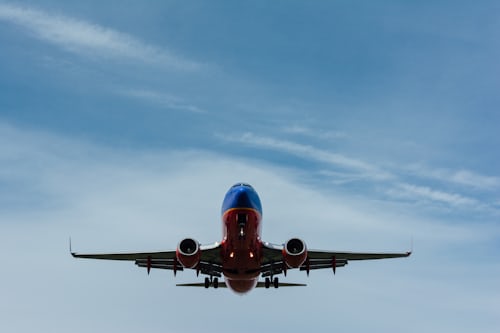But should most Americans really be ashamed of getting on a plane to see grandma this holiday season?
The short answer: Probably not. If your flights are purely a luxury, though, that’s another matter.
 A small group of frequent fliers, 12 percent of Americans who make more than six round trips by air a year, are responsible for two-thirds of all air travel and, by extension, two-thirds of aviation emissions, according to a new analysis by the International Council on Clean Transportation, a nonprofit research group.
A small group of frequent fliers, 12 percent of Americans who make more than six round trips by air a year, are responsible for two-thirds of all air travel and, by extension, two-thirds of aviation emissions, according to a new analysis by the International Council on Clean Transportation, a nonprofit research group.Each of these travelers, on average, emits more than 3 tons of carbon dioxide per year, a substantial amount, particularly by global standards. And the most frequent fliers, those who take more than 9 round trips per year, emit the highest share." by By Hiroko Tabuchi and Nadja Popovich writing for the New York Times Climate Forward newsletter.
The countries with the highest CO2 emissions from passenger flights in 2018:
U.S: Americans are responsible for 24% of all air travel and thus, 1/4 of all emissions from flying
China is #2 with 13% of all air travel emissions.
Japan is #3 with 3.1%
WOW! Americans are really the most polluting.
"So what’s to be done to curb frequent flying? One idea, floated by a group in Britain called A Free Ride, would tax fliers progressively: Everyone gets one tax-free return flight each year, and a tax kicks in at a low rate from the second flight. Taxes then ratchet up for each additional flight in that year."
And just this month, a Britain-based commission recommended banning air miles and frequent flier programs so that airlines do not “incentivize excessive flying.” The report cites data showing frequent fliers “strongly tend to be wealthier and less price-sensitive,” and recommends they should “incur increasingly powerful taxation to discourage additional flights.”
"Business travel makes up roughly 30 percent of air travel in the United States, according to data from Airlines for America, a trade group representing airlines. But some corporations are starting to question whether all of that travel is really necessary in an age of email, Slack and teleconferencing. In Europe, companies are starting to give extra time off to employees who opt to travel by train or other less-polluting transportation options on vacation."
If you must fly, then buy carbon offsets.
"Consider a trip from New York to Los Angeles. Flying 2,500 miles in economy class will burn about 0.29 metric tons of carbon per passenger, according to the International Civil Aviation Organization’s carbon emissions calculator. And it will cost about $3.26 to offset the approximately six hour, one-way flight using the travel offset calculator by Cool Effect, a nonprofit organization. If you round up to a full ton of carbon, you’d still only spend $3.30 to $13.18 on the Cool Effect website, depending on the project." By Jillian Mock and Hiroko Tabuchi writing for The New York Times Climate Forward Newsletter
Buy offsets (in Euros) at https://flygrn.com/offset-carbon
https://www.delta.com/en_US/about-delta/corporate-responsibility/carbon-emissions-calculator
https://www.united.com/ual/en/us/fly/company/global-citizenship/environment/carbon-offset-program.html
If you airline doesn't offer carbon offsets go to the Delta or United websites to estimate the cost and contribute on their website.

No comments:
Post a Comment